Current Research
The following are active projects by Villanova faculty utilizing HPC resources to conduct research and complete analyses.
Investigating the mechanical response of tungsten alloys exposed to fusion-like environments
David Cereceda, PhD
Assistant Professor, Mechanical Engineering
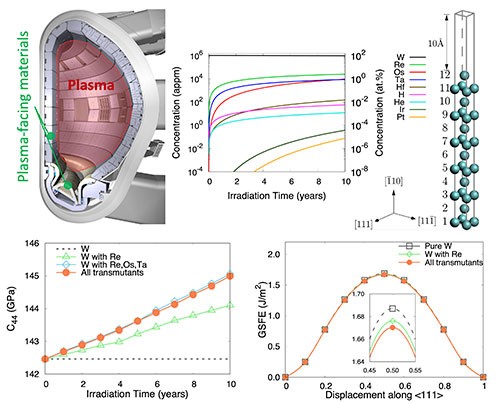
Tungsten (W) and tungsten alloys are being considered as leading candidates for structural and functional materials in future fusion energy devices. Significant neutron-induced transmutation happens in these tungsten components during nuclear fusion reactions, creating impurity elements such as Re, Os and Ta that change the mechanical response of the material.
In this project, we use first-principles calculations based on density functional theory to investigate the mechanical response of tungsten alloys exposed to fusion-like environments. We focus on how the elastic constants, elastic properties, ideal tensile strength and ductility evolve as the alloy composition changes during the course of irradiation.
Investigating charge transport at the molecular level in rechargeable batteries
Ryan Jorn, PhD
Associate Professor, Chemistry
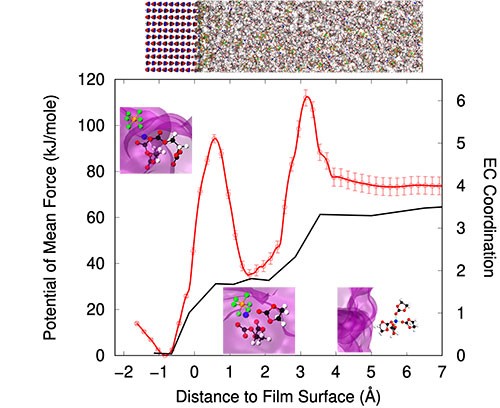
The exchange of charges at electrode surfaces is paramount to the operation of electrochemical energy storage devices, such as lithium-ion batteries. Despite their critical role in ion transport, the energy barriers associated with the movement of ions are not well understood nor is the mechanism for ion transport. The Jorn lab is employing classical molecular dynamics simulations to investigate charge transport at the molecular level for metal-ion solutions at electrode surfaces. Their work requires adequate sampling of the ion environment for tens of thousands of atoms across tens of millions of time steps. Enhanced sampling techniques with HPC resources will assist in the simulations of the ion transfer across liquid/solid interfaces.
Conducting direct numerical simulations of freely flying insects using a Cartesian-grid based immersed-boundary method
Chengyu Li, PhD
Assistant Professor, Mechanical Engineering
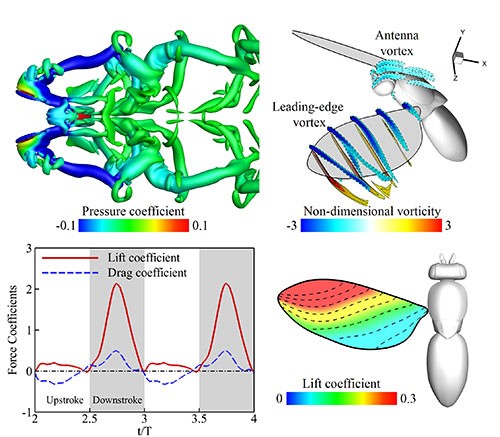
When flying animals flap their wings to lift their body in the air, they create an aerodynamic footprint—vortex structure in the wake. Such a three-dimensional (3D) unsteady flow structure is important to understand the mechanics of animal flight, since the aerodynamic force generation is matched by the shedding of vorticity into the wake according to fluid dynamic principles. Despite advancements in studying the complex 3D unsteady flow and aerodynamics of animal flight in the literature, there is a significant lack of comprehensive knowledge about the complex flow structure and its associated aerodynamic mechanism on small size insects (i.e. fruit fly, butterfly, and hawkmoth). In the absence of such comprehensive understanding about the complex flow structure and its associated aerodynamics, ubiquitous flow physics and aerodynamic mechanisms that exist on many different insect species are very likely overlooked.
In this project, we will conduct direct numerical simulations of freely flying insects using a Cartesian-grid based immersed-boundary method. This in-house computational is capable of simulating flows with complex moving boundaries, predicting instantaneous hydrodynamic force generation and resolving complex vortex structures that potentially affect both aerodynamic performance and sensing. The findings of this study could provide important implications for designing more efficient flapping-wing micro air vehicles.
Physics-informed machine learning for diagnostics and prognostics
C. Nataraj, PhD
Moritz Endowed Professor of Engineered Systems
Director – VCADS Research Center
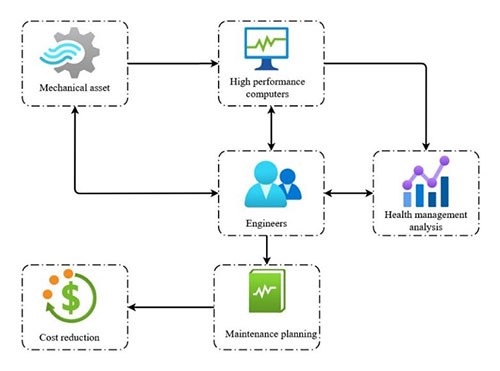
Rapid development of advanced mechanical and electromechanical systems in recent decades has led to high demands for maintenance planning. According to official statistics, large carriers in the U.S. have yearly maintenance budgets in excess of $1 billion. The engineering health management community has tried to address this requirement by proposing a wide range of frameworks. The objective is to obtain a general representation of a mechanical asset’s normal operation, abnormalities and their progression. Many physics based and data based frameworks have been developed along this line. As the mechanical systems become more complex, the capability of physics-based frameworks is limited. On the other hand, lack of availability to enough informative sensory data and computational resources is a burden in data based approaches.
Recent advances in sensory technology and information and communication technologies (ICT) have led to the arrival of the era of big data. Achievements such as clouds, graphics processing units (GPUs), high performance computers (HPC) and advanced sensory facilities have contributed noticeably to data-based frameworks. At VCADS, we have been building on these developments to do the following with applications to mechanical and electromechanical systems.
- Big data acquisition from mechanical systems and data processing to obtain representative data domains and system identification.
- Using deep learning (DL) as a state of the art data-based framework for building complex models representing mechanical system states for diagnostics and prognostics applications.
- Performing billions of calculations for optimization of models and design modification.
- Physics-informed maintenance frameworks. This results in deeper understanding on underlying degradation progression of mechanical systems by integrating well-established engineering modeling theories into data-based techniques.
- Building multi-scale models representing coupling between different faults of mechanical systems. This is achieved using large scale and parallel computations and provides more accurate life prediction.
These contributions in modeling, simulation, test and analysis along with well-established engineering concepts lead to improvement in productivity, reliability, availability, maintainability and safety (RAMS) of mechanical assets. Outcome will be shorter downtimes, higher operation performance, reduced operations and maintenance cost, and more effective logistics planning. The adjoining figure shows this collaboration between data science and engineering.
How rivers respond to climate change and altered watersheds
Virginia Smith, PhD
Assistant Professor, Civil and Environmental Engineering
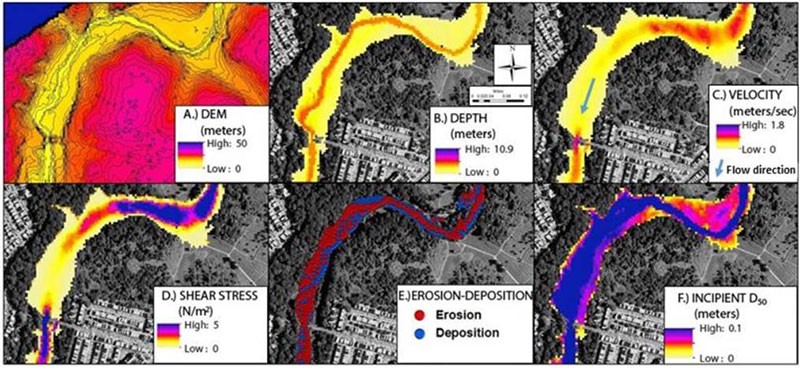
The Villanova Center for Resilient Water Systems has been developing a range of models for describing fluvial geomorphic change associated with climate change and watershed urbanization, as well as high resolution spatio-temporal models of the function of green stormwater infrastructure (GSI) coupled with watershed dynamics. Running the models on the HPC will facilitate experiments in modeling fluvial geomorphic change in deep time and allow for complex models incorporating a myriad of variables needed to accurately describe urbanizing watershed dynamics. The findings from these models will provide insight into how rivers respond to climate change and altered watersheds and how altered urban landscapes impact GSI sustainability. The basic models for this project have been developed and are being finalized to be tested on the HPC. The personnel working on these projects are being trained to use the HPC.
Developing computational models that process language similarly to humans
Joseph Toscano, PhD
Assistant Professor, Department of Psychological and Brain Sciences
Director, Cognitive Science Program
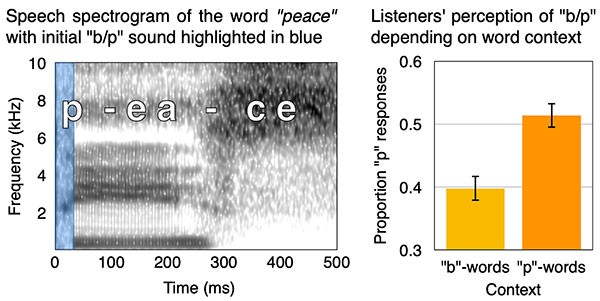
Our research focuses on questions about speech recognition and language comprehension. One of the major challenges in this area involves developing computational models that process language similarly to humans. These models can help us interpret the results of experiments we run in the lab, and they help us generate predictions for future studies. For example, previous work has shown that listeners will perceive an ambiguous speech sound between "b" and "p" differently depending on the context: if it is followed by "beace", listeners perceive it as a "p" (since "peace" is a word and "beace" is not). We can study this effect, as well as other effects in spoken word recognition, by training neural network models on large sets of spoken words and measuring how the networks process words that contain different speech sounds. The Augie computing cluster will allow us to train larger networks more quickly, providing us with more realistic models that can be compared to results from human listeners.
